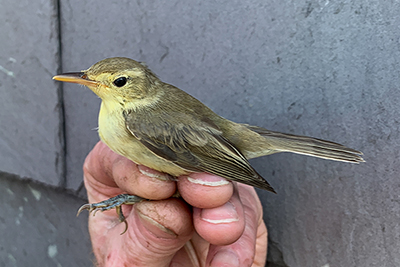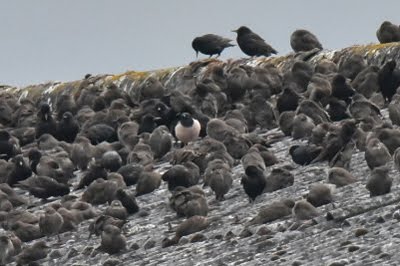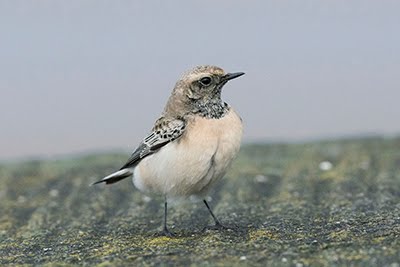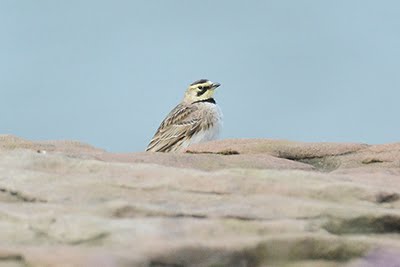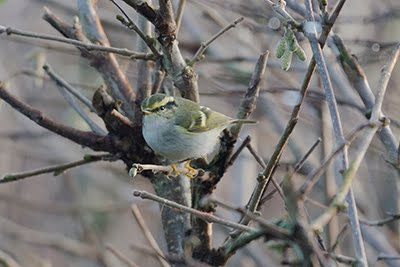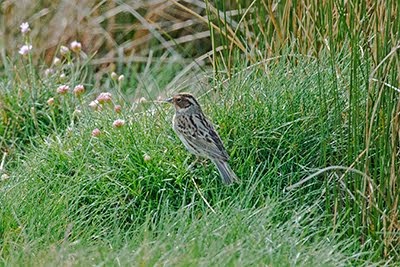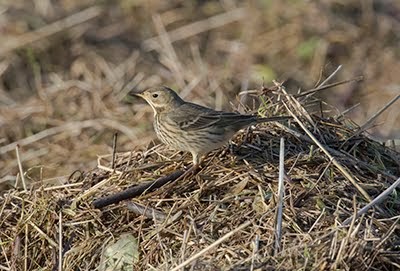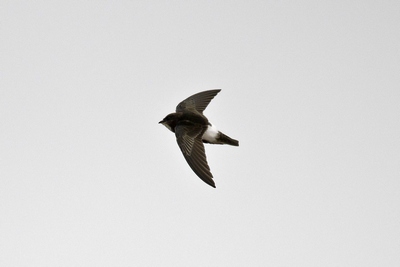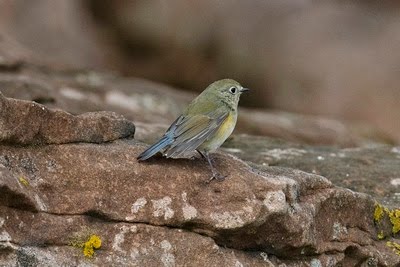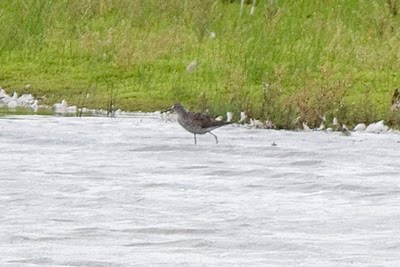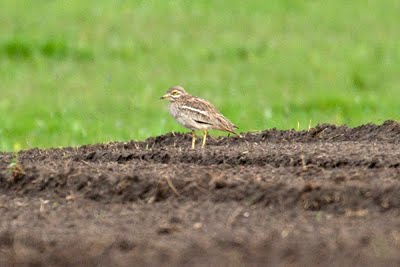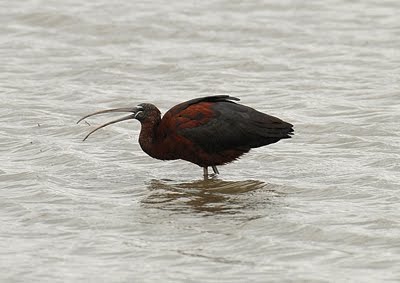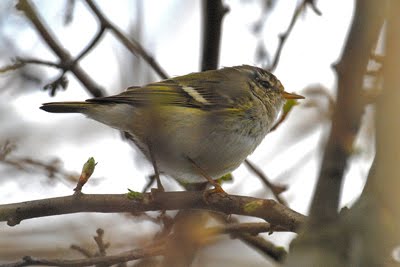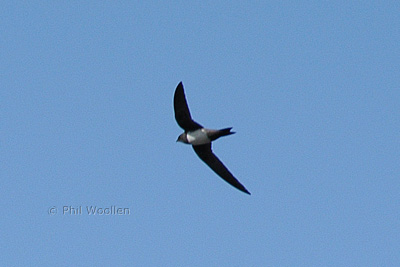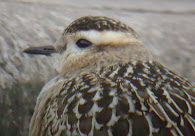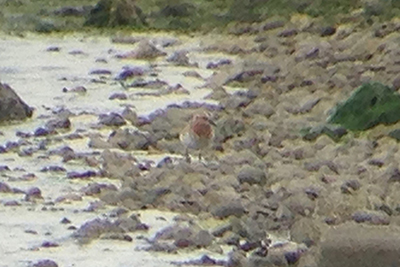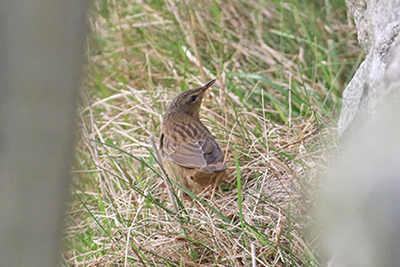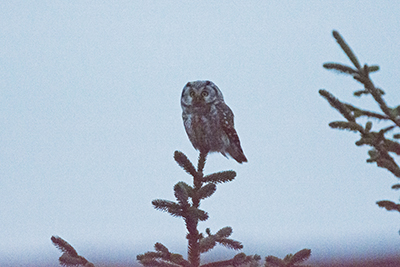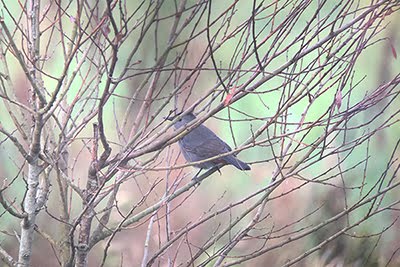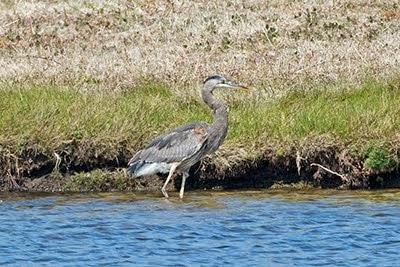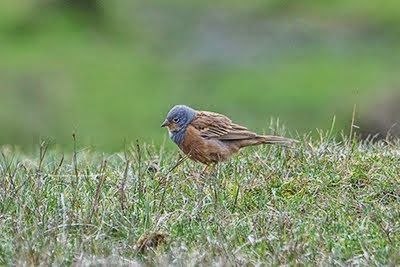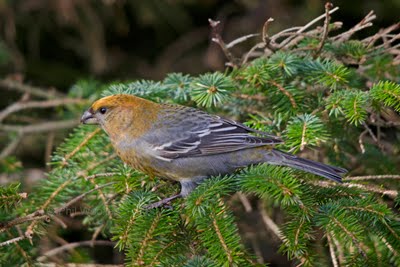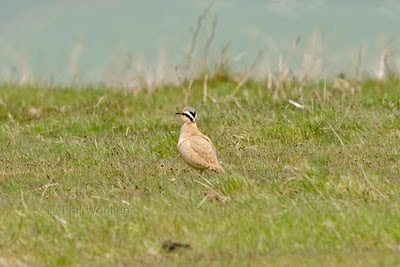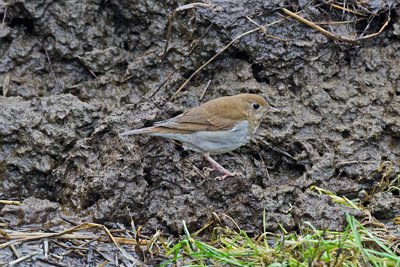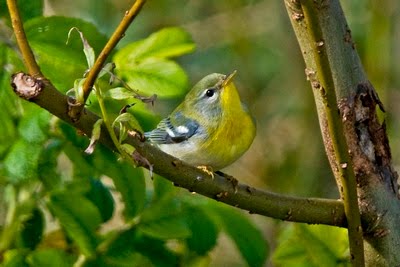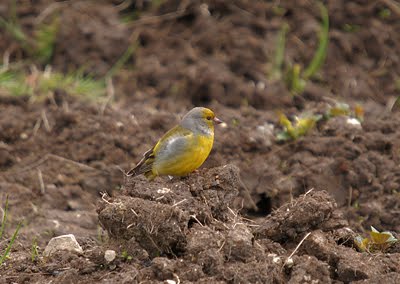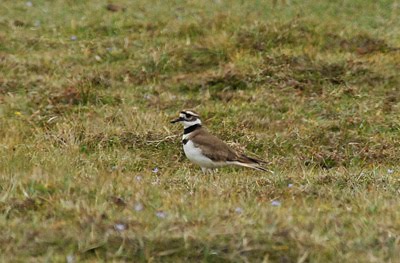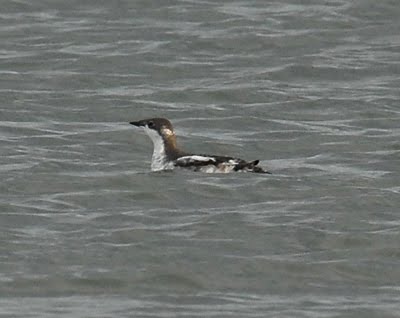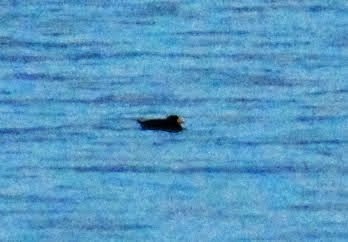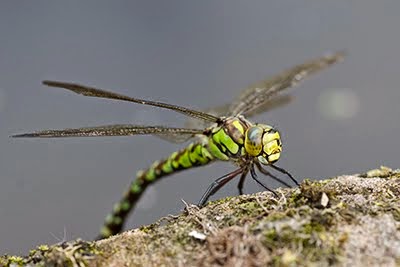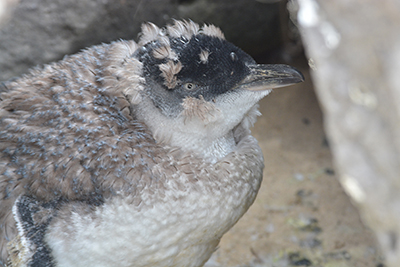As we drove up the ramp to the Obs it was suddenly seen perched on 'Wheatear Hill' and we both managed to get some good shots - in Steve's case some video as well.
Meadow Pipits were in full song-flight mode and it was nice to see one of our ringed birds perched up just outside the Obs gate. He was busy singing and trying to attract a mate despite the presence of the Merlin!
Later, at the north end, we watched a Rock Pipit and this to gave good views and allowed some good photo's to be taken.
A small group of Redshank and Turnstone showed well as the high tide had forced them ff their usual roost. They weren't perturbed by our presence as they moved to higher and higher ledges as the tide flooded.
Back at the Obs for a cooked breakfast Steve found two drake Eiders from the balcony whilst the local male Kestrel carried on its crusade against the local vole population.
With time for a few essential repairs to the Obs balcony and some good birding it was well worth the trip across and to complete the raptor theme the long staying presumed escaped American Red-tailed Hawk showed well from Steve's drive as I dropped him off.





















































